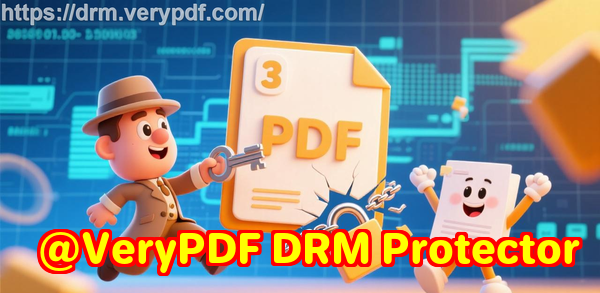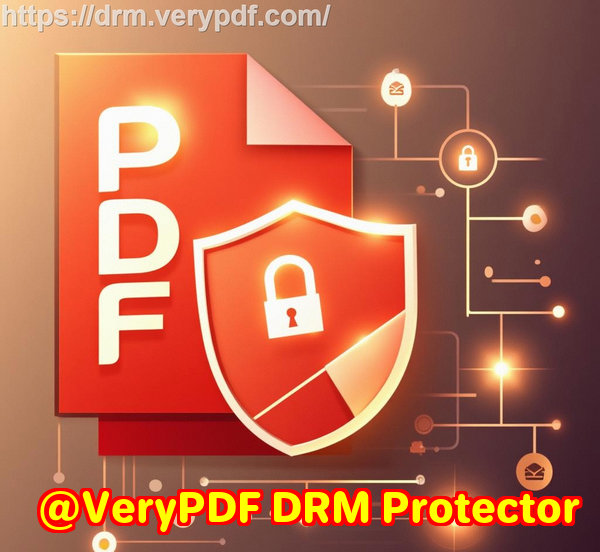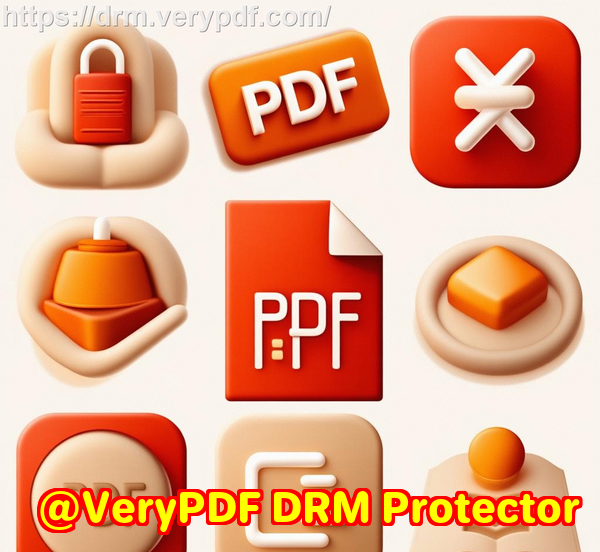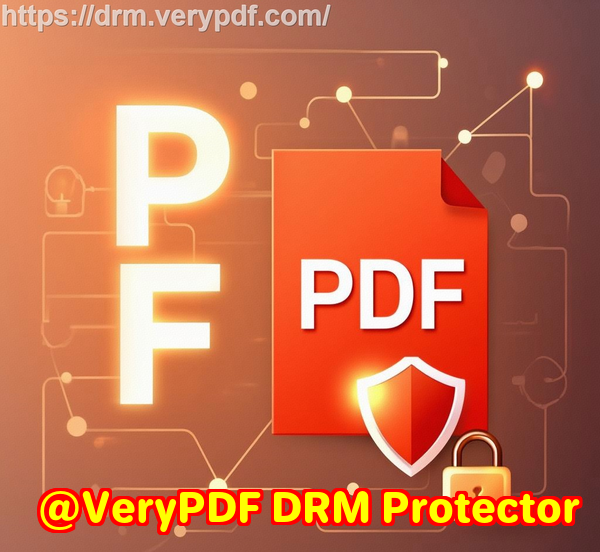How to Share Confidential Financial Reports and Audit Documents Securely Using VeryPDF DRM Protector for Accounting Teams
Learn how accounting teams can securely share confidential financial reports with VeryPDF DRM Protector, controlling access, expiry, and usage.
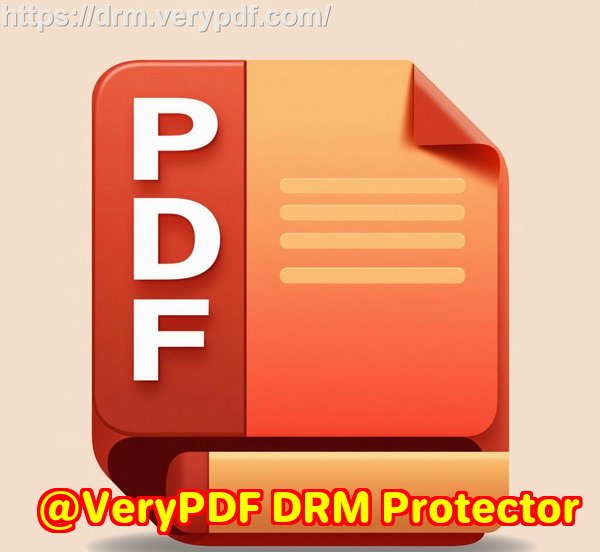
Every Monday, I used to dread sending sensitive financial reports to clients and colleagues.
Even with password-protected PDFs, I constantly worried: could someone forward the file? Could it end up in the wrong hands?
For accounting teams handling audits, financial statements, or confidential tax documents, these fears are very real.
It wasn’t until I discovered VeryPDF DRM Protector that I finally felt in control.
This tool is a game-changer for secure external document sharing, offering a suite of features designed to prevent unauthorised access, copying, or distribution.
Why VeryPDF DRM Protector is Perfect for Accounting Teams
Accounting teams deal with documents that are highly sensitive: audit reports, client tax data, payroll records, internal financial statements, and compliance reports.
Any leak, accidental or intentional, could result in legal issues or loss of client trust.
VeryPDF DRM Protector isn’t just another PDF security toolit gives you real control over who can view, print, or share your files.
I first started using it when our audit team needed to distribute quarterly reports to external auditors.
Previously, we emailed PDFs with passwords, but there was no way to control forwarding or limit views.
With VeryPDF, we could create secure links, track usage, and even expire documents automatically.
Core Features I Loved
1. Easy Upload and Sharing
Drag-and-drop functionality makes uploading documents simple.
You can upload PDFs from your computer, Dropbox, OneDrive, or even mobile devices.
Each file can be bundled into a single link for easy distribution.
For example, I shared a set of 10 audit reports with an external team via one URL, saving hours of separate emails.
2. Full Access Control
This is where the magic happens.
You can:
-
Limit the number of views per document
-
Set expiration dates after a number of days, views, or prints
-
Stop unauthorized printing or copying
-
Lock document access to specific devices or locations
For one project, we needed auditors to view reports only on their office laptops during work hours.
Using device and location locking, I knew the documents couldn’t be opened elsewhere, which gave peace of mind I never had before.
3. Dynamic Watermarking
Every time someone views or prints a document, a watermark can be added with their name, email, company, date, and time.
I remember sending a financial report to a client and seeing it watermarked with their email and the current dateinstant accountability.
No more worrying about screenshots being shared without traceability.
4. Revoke Access Instantly
One of my favourite features is the ability to revoke access instantly.
When an external auditor left the firm midway through a project, I revoked their access to all shared reports with one click.
No chasing emails, no guessing who still had filesit just worked.
5. Tracking and Reporting
You can log who viewed or printed documents, which devices they used, and when.
During a recent audit review, I was able to provide exact logs to management showing which external partners had accessed sensitive reports.
This not only ensured transparency but also supported compliance requirements for confidential financial data.
How VeryPDF DRM Protector Compares to Other Tools
Before I found VeryPDF, we tried traditional password-protected PDFs and cloud sharing platforms.
Problems with those methods:
-
Passwords can be forwarded, compromising security
-
Cloud sharing links can be shared with anyone, even accidentally
-
Limited trackinghard to know who accessed a document or when
-
Expiry and print controls were minimal or non-existent
VeryPDF solves these problems elegantly:
-
Strong encryption and DRM prevent unauthorized access
-
Device and location locks stop file misuse
-
Detailed logging provides proof for compliance audits
-
Customizable expiry and printing limits give you full control
Real-Life Use Cases
1. Audit Document Distribution
I needed to send audit workpapers to multiple external auditors.
With VeryPDF, I created a single secure link with individual watermarks for each auditor.
They could only view files on their registered devices, and I could revoke access after the audit period ended.
2. Financial Reports for Clients
Instead of emailing PDFs that could be forwarded, I sent secure URLs with expiry dates and view limits.
Clients appreciated the mobile-friendly access, and I appreciated knowing that the reports couldn’t be accidentally shared.
3. Internal Compliance Documents
Even internally, sensitive HR or payroll reports can be risky.
VeryPDF allows internal teams to share documents while enforcing viewing rules, printing limits, and access logs.
This helped our finance department maintain compliance without slowing workflow.
4. Offline Document Sharing via USB
Sometimes we need to distribute reports during meetings or conferences.
With VeryPDF’s Safeguard Portable, I could put protected PDFs on USB sticks.
The documents were fully secure, watermarked, and expired automatically, all without requiring an internet connection.
My Personal Experience
After using VeryPDF DRM Protector, I realised how much time and stress it saved.
I no longer worry about emailed PDFs being forwarded or lost.
The ability to control views, revoke access, and track usage is invaluable.
One memorable instance: a client accidentally shared a report link with a contractor.
Normally, this would have caused a panic.
Thanks to VeryPDF, I could immediately revoke access, set expiry, and ensure the document was never compromised.
Conclusion
Securely sharing confidential financial reports and audit documents is no longer a headache.
VeryPDF DRM Protector empowers accounting teams to control document access, monitor usage, and prevent unauthorized sharing or printing.
If you work in finance, audits, or accounting, I’d highly recommend this tool.
It saves time, ensures compliance, and protects sensitive data effortlessly.
Click here to try it out for yourself: https://drm.verypdf.com/
Custom Development Services by VeryPDF
VeryPDF offers tailored development solutions for businesses with unique document security needs.
Whether it’s Linux, macOS, Windows, or server environments, their team can build utilities for:
-
Python, PHP, C/C++, Windows API, Linux, Mac, iOS, Android, JavaScript, C#, .NET, HTML5
-
Windows Virtual Printer Drivers to generate PDF, EMF, and image formats
-
Printer job capturing and monitoring to intercept and save print jobs
-
System-wide or application-specific Windows API hooks
They also handle document formats including PDF, PCL, PRN, Postscript, EPS, and Office documents.
Additional services cover barcode recognition, OCR, document form generators, image and document management tools, cloud-based conversion and viewing, PDF security, digital signatures, DRM protection, and more.
For tailored solutions, contact VeryPDF support: https://support.verypdf.com/
FAQ
1. Can I limit how many times a PDF is viewed?
Yes. VeryPDF DRM Protector lets you set view limits and automatically revoke access once the limit is reached.
2. Can I track who prints my financial reports?
Absolutely. You can log each print event, including the device and user, and even watermark printed pages.
3. Is it possible to revoke access after sending a document?
Yes. You can revoke access for individual users or all users instantly, regardless of document location.
4. Can my team access documents from mobile devices?
Yes. Documents are mobile-friendly, and QR codes in email invitations make viewing simple.
5. Can I share documents offline, like via USB?
Yes. With Safeguard Portable, you can distribute protected PDFs on USB drives with full DRM controls, even offline.
Tags or Keywords
-
Secure PDF sharing
-
Financial report security
-
Audit document protection
-
Document DRM software
-
External document distribution
-
VeryPDF DRM Protector
-
Accounting team PDF security

